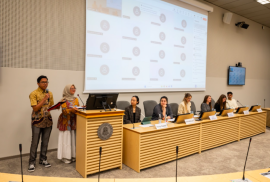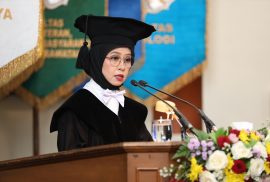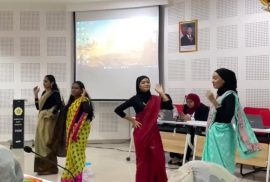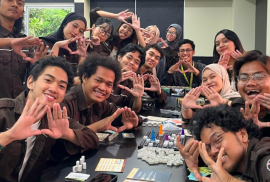Yogyakarta, 8/5/2025 – Rr. Rachma Amalia Putri, a student of English Studies Program UGM, was enrolled in Indonesian International Student Mobility Awards (IISMA) 2024. IISMA is a mobility program under the Ministry of Education, Culture, Research, and Technology. After a rigorous selection process, Putri was accepted for IISMA at Vytautas Magnus University (VMU), Lithuania.
Putri was very enthusiastic for this studying opportunity. “Studying abroad is a stepping stone towards greater opportunities in academics and non-academic fields. I want to get firsthand experiences from the professors, as they are not only experts in their fields but also active practitioners,” she mentioned.
Putri noted that the experience studying abroad was beyond her expectations. At VMU, she took four courses: Introduction to Sociolinguistics, Media and Popular Culture, Creative and Feature Writing, as well as Lithuanian as a Foreign Language A1. Putri enjoyed her learning process, especially due to the dedication of lecturers at VMU. She was also grateful for the opportunity to collaborate with other international students.
Outside the classroom, Putri encountered many valuable experiences. She joined Kaunas Muslim Sister, a community for muslim women in Kaunas to share their experiences as a minority. During her stay at VMU, Putri was also given the opportunity to share Indonesian culture in Lithuanian schools. She was also appointed as the moderator in the Alumni Day event to celebrate the re-establishment of VMU. Putri and her IISMA fellows also held a charity event to promote Batik, Weaving Cultures: Batik Day and Charity Gala.
From the exchange at VMU, Putri learned many things: how to survive in a new environment, be independent in any situations, and be an ambassador of Indonesian culture. After graduating, Putri planned to pursue a master’s degree abroad in order to fulfil her dream of being a lecturer, a way to dedicate her knowledge for Indonesia.
[Public Relation of English Literature, Sekar Ajiningsih]






